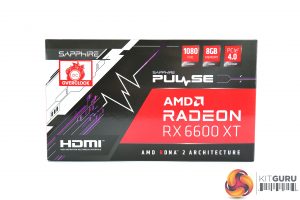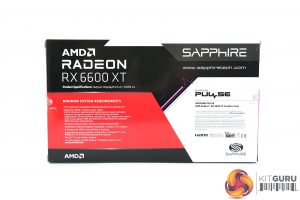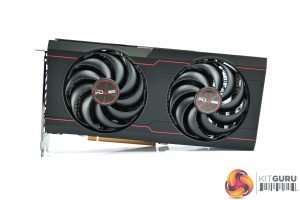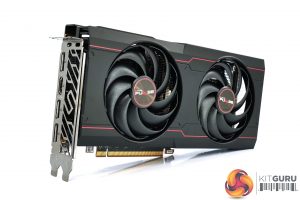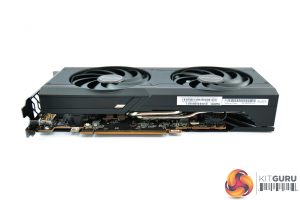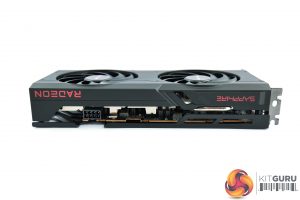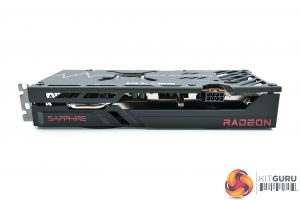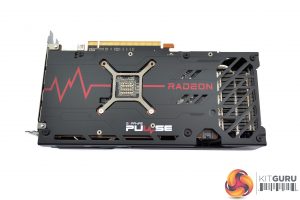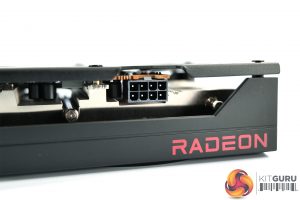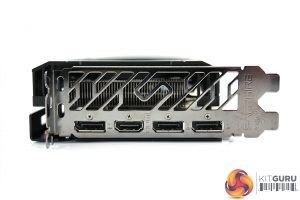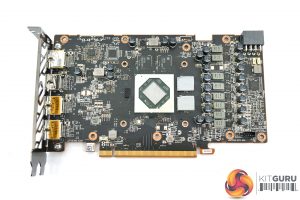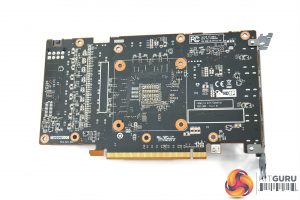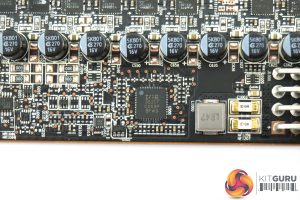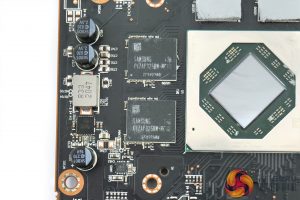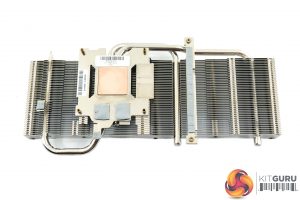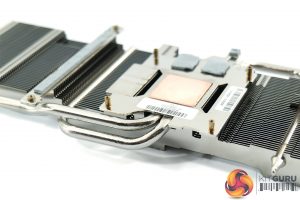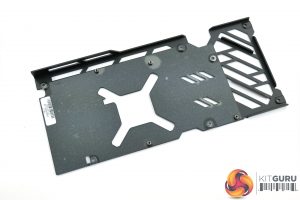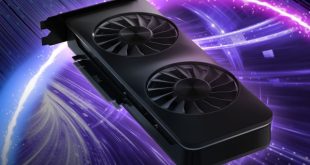The Sapphire RX 6600 XT Pulse ships in a multi-coloured box. There's no image of the graphics card visible on the front, but we can see the ECG graph – hence the name ‘Pulse.'
On the back, various key specs of the RX 6600 XT are highlighted.
Inside, we find two pieces of documentation – a quick start guide and a manufacturer's note.
Looking at the graphics card itself, we can immediately see a slight update to the design compared to the RX 5600 XT Pulse. Gone are the silver sections, and the card is now almost entirely black, with just two slim red lines running along the length of the card. It's overall very stealthy, and I have to say I do quite like it.
We can also note the Dual-X cooler, meaning there's two fans, each of which measure 90mm across. These use Sapphire's Hybrid Fan Blade design, with each of the fan blades connected to one another via a ring running around the outer edge of the blades. Sapphire says this offers the ‘quietness of a traditional axial fan design… alongside the strong air pressure of a blower fan', with the company claiming a 5.5% improvement in downward air pressure – presumably compared to the previous Pulse fan design.
It's good to see the Pulse is a relatively compact card, too. It measures 240 x 119.85 x 44.75 mm, so it's only just thicker than a standard dual-slot card.
Tipping the scales at 614g, it is also pretty lightweight – for reference, the Gigabyte Gaming OC Pro we reviewed yesterday weighs 895g.
The top side of the card is home to the Sapphire and Radeon logos printed in red, but it's important to note there's no RGB anywhere on the card. Whether that is a good or bad thing is entirely dependent on your personal view of RGB.
As for the backplate, it's a full-length metal design, with just a splash of colour from the red ECG graph. We can note a cut-out behind the back of the GPU die, while there's also a cut-out towards the end of the card, to allow airflow to pass directly through the heatsink.
As expected, power requirements consist of a single 8-pin PCIe connector. Display outputs are also standard, with 3x DisplayPort 1.4 and 1x HDMI 2.1.
Opening up the card to look at the PCB, we can see the design is broadly similar to that of the Gigabyte Gaming OC Pro we looked at yesterday, so it's likely both cards are using slightly tweaked versions of AMD's reference design.
That means we have an 8+2 phase VRM, with the GPU VRM controlled by International Rectifier’s IR35217. Sapphire is using OnSemi's 302045 and 302155 MOSFETs for the GPU VRM. As for the memory, here we can see OnSemi's 302045 MOSFETs used, as well as OnSemi’s NCP81022N controller.
The memory modules themselves are Samsung GDDR6 K4ZAF325BM-HC16 chips.
As for the heatsink, this is a pretty simple design, using a single finstack and just two heatpipes. The GPU die contacts with a small copper slug, while the memory contacts with a secondary baseplate. There's also another baseplate used to contract the GPU VRM, and a tiny contact point for one of the memory MOSFETs too.
Lastly, there are no thermal pads on the underside of the backplate, something which doesn't make a massive difference but it is something I always like to see.
Be sure to check out our sponsors store EKWB here
 KitGuru KitGuru.net – Tech News | Hardware News | Hardware Reviews | IOS | Mobile | Gaming | Graphics Cards
KitGuru KitGuru.net – Tech News | Hardware News | Hardware Reviews | IOS | Mobile | Gaming | Graphics Cards


